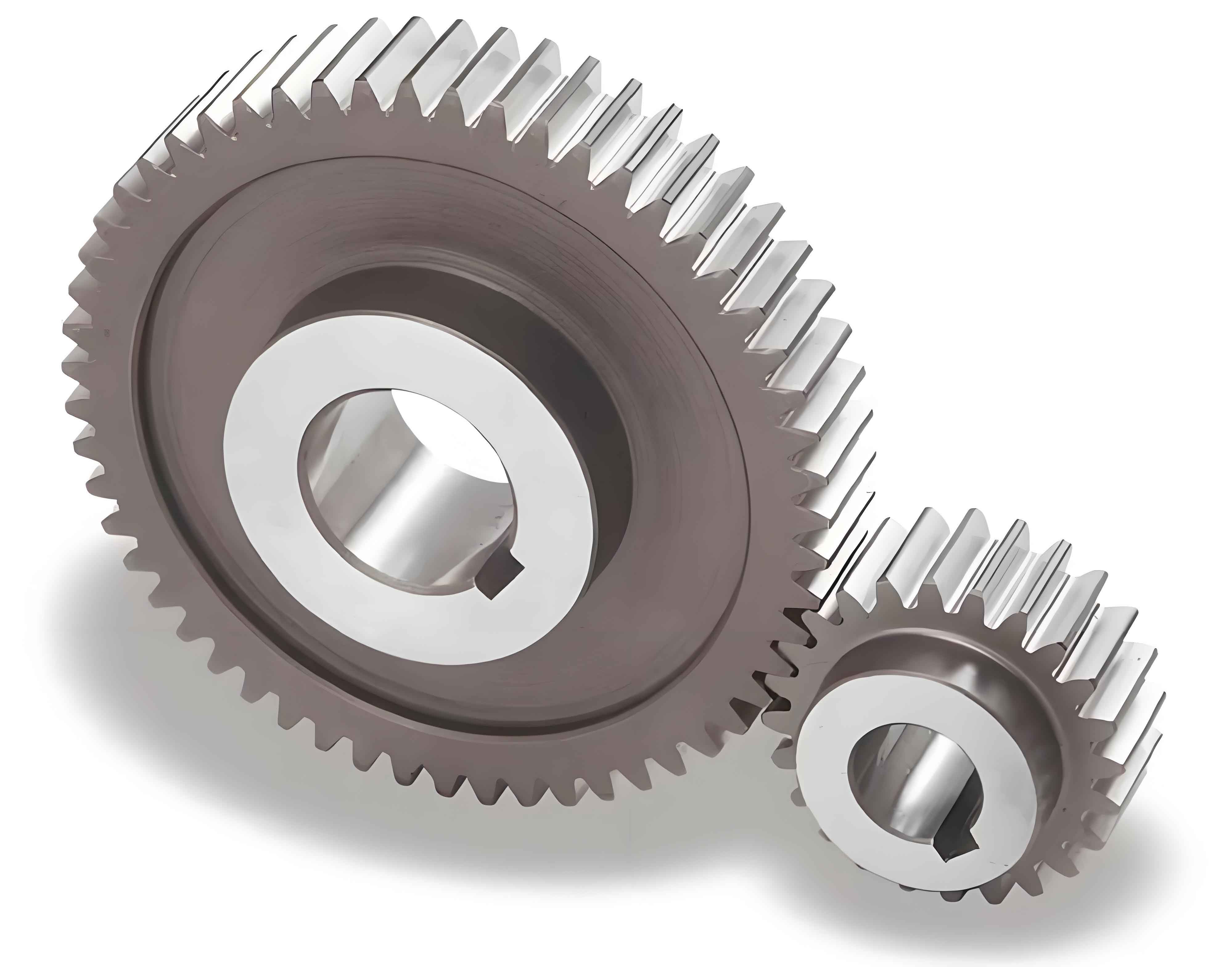Metal injection molding (MIM) is widely recognized for producing small, complex-shaped metal components, particularly iron-based alloys under 50 g. However, achieving precision in spur gears—repetitive-feature components demanding high dimensional accuracy—remains challenging. This study investigates the thickness direction deviation of a 17-4PH stainless steel spur gear fabricated via MIM and proposes process optimizations to enhance geometric fidelity.
Experimental Design
The spur gear design (Figure 1) includes a stepped shaft sleeve to simulate real-world gearbox conditions. Critical parameters are listed in Table 1. Mold dimensions were scaled using an oversize shrinkage factor (OSF):
$$ \text{OSF} = 1.165 $$
ensuring post-sintering shrinkage compensation. Moldflow® analysis guided gate placement at the shaft center to improve filling uniformity.

Table 1. Spur Gear Design Parameters
| Parameter | Value |
|---|---|
| Module (mm) | 0.65 |
| Number of Teeth | 25 |
| Face Width (mm) | 3.80 |
| Outer Diameter (mm) | ϕ17.18+0.02-0.1 |
| Root Diameter (mm) | ϕ14.34+0-0.1 |
| Base Tangent Length (mm) | 6.798-0.051-0.101 |
| Accuracy Target | AGMA Q8+ |
Process Optimization
The MIM workflow (Table 2) utilized gas-atomized 17-4PH powder (D50 = 7.9 μm). Key process modifications included:
- Injection Parameter Adjustment: Melt temperature (195°C) and holding pressure profiles
- Green Body Orientation: Vertical stacking on alumina setters with Ra < 10 μm
- Sintering Optimization: Vacuum sintering at 1,300°C for 3 hr under argon partial pressure
Table 2. MIM Process Parameters
| Stage | Key Parameters |
|---|---|
| Feedstock | 63.2 vol% loading, binder system: PW-HDPE-SA |
| Molding | 50T electric press, 195°C nozzle temperature |
| Debinding | Catalytic debinding: 120°C × 6 hr in 2.5 vol% oxalic acid |
| Sintering | 1,300°C × 3 hr, 10-3 mbar vacuum |
| Post-Processing | Magnetic abrasive finishing (0.3 mm media, 60 rpm) |
Results and Analysis
Density measurements followed Archimedes’ principle:
$$ \rho_{\text{sintered}} = \frac{m_{\text{air}}}{m_{\text{air}} – m_{\text{water}}} \cdot \rho_{\text{water}} $$
showing 7.785–7.798 g/cm³ (98.9–99.3% theoretical). Vickers hardness reached 273–287 HV0.1, confirming proper precipitation hardening.
Table 3. Dimensional Accuracy Improvement
| Feature | Initial Deviation (mm) | Optimized Deviation (mm) |
|---|---|---|
| Outer Diameter | 0.07–0.08 | 0.02–0.03 |
| Root Diameter | 0.06–0.07 | 0.02–0.03 |
| Face Width | ±0.05 | ±0.02 |
Geometric distortion stemmed from non-uniform shrinkage along the thickness direction (Z-axis). The compensation strategy employed inclined wire-EDM machining (Figure 2) to create tapered mold cavities:
$$ \Delta D = D_{\text{gate}} \cdot (1 + \alpha \cdot \Delta T) – D_{\text{eject}} $$
where α represents the thermal expansion coefficient of the feedstock.
Conclusion
Through mold compensation and process optimization, thickness direction deviation of MIM-processed spur gears was reduced to 0.02–0.03 mm, achieving AGMA Q9 accuracy. Key factors include:
- Differential shrinkage compensation via tapered cavity design
- Optimal feedstock distribution through central gating
- Controlled sintering atmosphere minimizing interfacial reactions
This methodology demonstrates MIM’s capability for high-precision spur gear manufacturing, expanding its applications in power transmission systems requiring tight tolerances.
